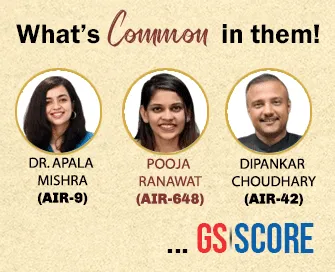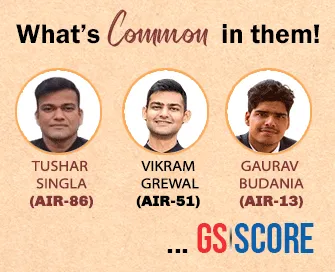

4th August 2025 (11 Topics)
Mains Issues
Context:
Nagpur district has inaugurated India’s first AI-powered anganwadi integrating digital tools, AI systems, and gamified learning to enhance early childhood education and health tracking.
Digital Transformation in Anganwadis through AI Integration
Background
- Anganwadis are part of India’s Integrated Child Development Services (ICDS) scheme, focusing on nutrition, health, and early education for children under six years of age.
- The newly launched AI-powered anganwadi in Nagpur Zilla Parishad combines AI-driven learning tools, gamification, and digital health monitoring.
- The initiative aims to address physical, cognitive, and language development gaps in rural children.
Features of the AI-Powered Anganwadi
- Educational Enhancements
- Use of AI systems like Gemini and Perplexity to adjust difficulty levels based on the child’s learning capacity.
- Smart boards, VR headsets, and gamified tools for interactive learning.
- Fun in the Anganwadi (FITA) initiative introducing songs, games, and AI-tracked comprehension exercises.
- AI charts each child’s learning progress, enabling personalised education.
- Teacher Training
- Workers receive structured AI training three times a week.
- AI-trained anganwadi workers guide children in a self-paced learning environment.
- Coordination between trainers and workers to build digital confidence.
- Monitoring & Evaluation
- AI tools track real-time progress of children’s physical and cognitive development.
- Integration with Poshan Tracker for nutrition and health monitoring.
- Workers upload pictures of meals for age-specific diet feedback.
Social & Developmental Impact
- Bridging the digital divide in rural education.
- Tracking pregnancy and maternal health through AI monitoring.
- Introduction of multi-language learning, including English, Hindi, Marathi, and foreign languages.
- Reducing absenteeism and improving early childhood readiness.
Challenges
- Resistance from workers unfamiliar with digital tools.
- Need for continuous skill training for workers.
- Infrastructure gaps in electricity and internet connectivity.
- Initial adaptation difficulties in rural setups.
Way Forward
- Capacity Building: Continuous AI literacy and digital skill development for anganwadi workers.
- Infrastructure Strengthening: Reliable internet connectivity and backup power sources.
- Scalable Model: Replication in other districts after pilot evaluation.
- Community Engagement:Sensitisationprogrammes for parents on AI-driven education.
- Data Security: Strong data protection framework for children’s health and education records.


Mains Issues
Context:
A recent study highlights unsafe practices in auto component manufacturing and delays in the implementation of the Occupational Safety, Health and Working Conditions Code, 2020, raising concerns about worker safety and legal coverage.
Occupational Safety and Labour Codes: Balancing Industry Needs and Worker Protection
Background
- India’s industrial sector, especially auto component manufacturing, faces rising cases of workplace injuries, including serious accidents such as crushed finger incidents.
- The Safe in India (SII) Foundation’s “Crushed Report 2025” flags systemic gaps in occupational safety measures.
- Legislative framework includes traditional laws like The Factories Act, 1948, now subsumed into the Occupational Safety, Health and Working Conditions Code, 2020 (OSH&WC Code).
Key Data Points
- 2,333 workers injured over three years in auto and auto component manufacturing.
- 875 workers lost fingers in 2024 (increase from 759 in 2023 and 699 in 2022).
- 32 States/UTs have pre-published draft rules for the OSH&WC Code; some, like West Bengal and Lakshadweep, have not published any.
OSH&WC Code – Salient Features
- Objective: Consolidate and amend laws relating to occupational safety, health, and working conditions.
- Coverage Threshold: Applies to establishments with 20+ workers (manufacturing with power) or 40+ workers (without power).
- Extended Benefits: Includes unorganised workers, inter-State migrant workers, gig workers, platform workers, and their families.
- Consolidates Laws: Subsumes The Factories Act, 1948; The Mines Act, 1952; The Dock Workers (Safety, Health and Welfare) Act, 1986; among others.
Concerns Raised
- Safety Concerns
- Lack of strict enforcement of workplace safety norms.
- Potential exclusion of small units from coverage due to increased threshold limits under the Code.
- Implementation Delays
- OSH&WC Code yet to come into force pending notification.
- Lack of uniform readiness among States/UTs.
- Trade Union Apprehensions
- Fear that threshold changes will dilute worker protection.
- Concern over removal of smaller establishments from the scope of safety regulations.
Comparative Perspective: Factories Act vs OSH&WC Code
- Factories Act, 1948: Applied to smaller establishments; had stricter thresholds.
- OSH&WC Code: Broader coverage of worker categories but higher thresholds could reduce applicability to small-scale units.
Way Forward
- Early Notification: Expedite rule-making and implementation across all States/UTs.
- Lower Thresholds: Ensure smaller units with high accident risks are not excluded.
- Stronger Monitoring: Mandatory safety audits and digital reporting of workplace accidents.
- Worker Awareness: Training on safety measures and legal rights.


Prelims Articles
Context:
The Prime Minister, Shri Narendra Modi today paid tribute to Shri PingaliVenkayya ji on his birth anniversary, who is remembered for his role in giving us our proud Tricolour.
Background
- Born: 2 August 1876, Bhatlapenumarru, Krishna district, Andhra Pradesh.
- Education: Studied geology in Colombo; learned Japanese, Urdu, Sanskrit.
Career and Early Activities
- Worked briefly as a railway guard; later pursued agricultural research.
- Served in British Boer War (1899–1902) – exposure to global politics increased nationalist spirit.
- Met Mahatma Gandhi in South Africa – lifelong association.
- Lecturer at Andhra National College; active in VandeMataram Movement & Home Rule Movement.
Contribution to National Flag
- Between 1918–1921, proposed a distinct flag at Indian National Congress sessions.
- March 1921, Vijayawada: Presented Swaraj Flag – saffron (Hindus) + green (Muslims).
- Later added white band (peace) and Charkha (self-reliance).
- 1931: Flag officially adopted by INC; became basis of present-day Tiranga.
Post-Independence Life
- Settled in Nellore; Advisor to Government of India’s Mineral Research Department.
- 1955: Authored The Mother of Diamonds on mineral resources.


Prelims Articles
Context:
The Mahanadi Water Disputes Tribunal (MWDT) has granted Odisha and Chhattisgarh more time to explore an amicable resolution to their long-standing river water sharing dispute.
Background of the Dispute
- River: Mahanadi River, originating from Chhattisgarh and flowing through Odisha before draining into the Bay of Bengal.
- Issue: Odisha alleges reduced water flow due to upstream projects in Chhattisgarh, affecting irrigation and ecology in its territory.
- Initiation of Dispute: Odisha moved the Supreme Court in 2016; the matter was later referred to the Mahanadi Water Disputes Tribunal under the Inter-State River Water Disputes Act, 1956.
Mahanadi Water Disputes Tribunal (MWDT)
- Constituted: 2018 by the Union Government under the Inter-State River Water Disputes Act, 1956.
- Mandate: Adjudicate the dispute between Odisha and Chhattisgarh regarding water sharing, taking into account equitable apportionment principles.
Recent Development
- Both States have indicated willingness to resolve the matter through bilateral talks under Union Jal Shakti Ministry
- Proposal to form a joint committee led by the Central Water Commission (CWC) for facilitating negotiations.
|
Inter-State River Water Disputes Resolution Constitutional Provision – Article 262
Legislations under Article 262
Inter-State River Water Disputes Act, 1956
|


Prelims Articles
Context:
The International Potato Center (CIP) announced that bio-fortified potatoes with enhanced iron content, adapted to Indian conditions, will soon be introduced in India following collaboration with ICAR–Central Potato Research Institute.
Bio-Fortified Potatoes
- Developed by:International Potato Center (CIP) – Peru-based, part of CGIAR.
- Nutrient Enrichment: Enhanced iron content (bio-fortification through breeding).
- Other Bio-Fortified Crops:Vitamin A-rich sweet potatoes already cultivated in Karnataka, Assam, West Bengal, Odisha.
Significance:
- Tackles micronutrient deficiency (iron deficiency anaemia).
- Enhances farmer income through improved varieties and market linkages.
- Encourages reduced agrochemical input and value chain integration.
|
International Potato Center
Institutional Affiliation:
Global Presence:
Relevance to India:
|


Prelims Articles
Context:
Farmers and activists in Arunachal Pradesh have opposed the proposed 11,500 MW Siang Upper Multipurpose Project, citing displacement, ecological loss, and cultural impacts, amid concerns over China’s Medog Hydropower Project on the YarlungTsangpo.
Siang Upper Multipurpose Project
Location & River System:
- Situated in Upper Siang District, Arunachal Pradesh on the Siang River (major Brahmaputra tributary).
- Origin:YarlungTsangpo near Mount Kailash in Tibet flows east for ~1,000 km and forms Namcha Barwa bend then enters Arunachal Pradesh as Siang River.
- Confluence: Joins Dibang and Lohit in Assam to form the Brahmaputra.
Strategic Importance:
- Countermeasure to China’s Hydropower Projects on YarlungTsangpo, safeguarding India’s water security.
- Helps mitigate downstream floods from sudden upstream water releases by China.
- Installed Capacity: ~11,000 MW (one of India’s largest proposed hydropower projects).
- Water Management: Ensures perennial flow, supports irrigation during lean seasons, aids agriculture.
Concerns:
- Displacement Risk: Affects large sections of the Adi tribe, including loss of farmlands, homes, and cultural sites.
- Potential ecological impacts on forest cover, biodiversity, and riverine ecosystems.


Prelims Articles
Context:
With increasing retail participation in U.S. equities by Indian residents, regulatory and tax compliance under the Liberalised Remittance Scheme (LRS) and the Black Money Act has gained renewed attention.
Liberalised Remittance Scheme (LRS):
- Introduced on 4 February 2004 with an initial remittance limit of USD 25,000, later revised in stages.
- Current limit: USD 2,50,000 per financial year for permissible transactions including foreign equity investments.
- TCS applies if annual foreign remittance exceeds ?10 lakh, with rate depending on purpose of remittance.
Taxation of Foreign Investment Income:
- Dividend Income: Subject to 25% withholding tax in the U.S., balance taxable in India per slab rates. Foreign Tax Credit (FTC) available under India-U.S. DTAA via Form 67.
- Capital Gains: No U.S. tax for Indian NRAs; in India, gains taxed as LTCG at 20% (with indexation) if held >24 months, otherwise STCG taxed per slab.
Disclosure & Penalties:
- Mandatory reporting of all foreign assets, irrespective of value, under Schedule FA of ITR.
- Non-disclosure attracts penalty of ?10 lakh/year under Black Money (Undisclosed Foreign Income and Assets) and Imposition of Tax Act, 2015 and may lead to imprisonment up to 7 years.
- Voluntary disclosure possible via revised return or ITR-U under Section 139(8A).


Prelims Articles
Context:
Certain proposals under Project Cheetah—such as relocating older cheetahs to Gandhi Sagar Wildlife Sanctuary and initiating a surrogacy programme—have been shelved by the Cheetah Project Steering Committee.
Project Cheetah
- Launched: 2022
- Objective: To reintroduce cheetahs in India after their extinction in 1952.
- Implementing Agency: National Tiger Conservation Authority (NTCA) in collaboration with the Ministry of Environment, Forest and Climate Change (MoEFCC) and international partners.
- First Release Site: Kuno National Park, Madhya Pradesh.
- Source of Cheetahs: Namibia and South Africa.
Key Facts from the Article
- The Steering Committee discussed relocating older cheetahs (not fit for breeding) to Gandhi Sagar Wildlife Sanctuary.
- Proposal to start surrogacy programme using techniques such as in vitro fertilisation (IVF) and embryo transfer, inspired by examples in the USA (Ohio Zoo, 2020).
- Madhya Pradesh wildlife officials and the committee have decided not to act on these suggestions currently.
- Proposal to boost prey base in Kuno by translocating blackbucks from Agra’s Sikandara Monument premises.
- Female cheetahs can reproduce until approximately 10–12 years of age in the wild.
Ecological Considerations
- Maintaining genetic diversity is crucial for a reintroduced population.
- Expanding prey base is essential to sustain predator populations and prevent human-wildlife conflict.
- Relocation to other sanctuaries like Gandhi Sagar can help reduce pressure on Kuno but also requires adequate habitat readiness.


Editorials
Context:
In May 2025, the Indian government accepted a report proposing a Repairability Index for electronics, alongside new e-waste incentives, highlighting the role of repair as a sustainability and knowledge resource.
Significance of Repair in Sustainability
- Tacit Knowledge Preservation: Informal repairers possess skills rooted in observation, improvisation, and sensory diagnosis, which are not easily codifiable but crucial for extending product lifecycles.
- Circular Economy Enablers: Repairers in hubs such as Karol Bagh and Ritchie Street keep devices functional beyond planned obsolescence, reducing e-waste generation and promoting resource efficiency.
- Global Policy Parallels: The EU mandates spare-part access and repair documentation, while India’s Right to Repair framework (2022) and national portal (2023) provide an evolving regulatory base.
Policy and Institutional Gaps
- Limited Policy Recognition: The E-Waste (Management) Rules, 2022, emphasise Extended Producer Responsibility but give minimal weight to repair as a preventive strategy.
- Skilling Framework Mismatch: National skilling programmes such as PMKVY focus on standardised industrial skills, overlooking the adaptive and diagnostic nature of repair work.
- Underutilised National Initiatives: NEP 2020 and Mission LiFE encourage experiential learning and reuse, yet lack targeted measures for sustaining repair communities’ livelihoods.
AI-Integrated Solutions and Future Roadmap
- Design for Unmaking: Hardware standards should mandate repairability features, informed by AI-based diagnostics and lifecycle analysis.
- Cross-Ministry Coordination: MEITY, Consumer Affairs, Labour, and Skill Development ministries can integrate repairability into procurement, training, and social protection schemes.
- Knowledge Codification with AI: Large Language Models and decision-tree systems can capture and share tacit repair expertise without erasing local context, enabling formal recognition and upskilling.
Practice Question:
"Discuss the significance of recognising informal repair work as a form of knowledge capital in the context of India’s sustainability and digital innovation policies. Suggest institutional measures to integrate repairability into the national policy framework." (250 words)


Editorials
Context:
U.S. President Donald Trump’s trade and geopolitical pressure tactics, urging India to resist short-term concessions to safeguard its long-term strategic and national interests.
Nature of U.S. Pressure on India
- Trade Penalties and Tariff Threats: The U.S. has targeted India with higher tariffs, particularly on steel, aluminium, and other critical exports, while pressuring India to alter its trade relations with Russia and China.
- Geopolitical Coercion: Trump’s administration has linked trade policy with strategic concessions, demanding alignment with U.S. positions on Iran, Palestine, and defence purchases.
- Domestic Political Posturing in the U.S.: Trump’s actions are partly driven by domestic electoral calculations, using foreign trade disputes to project strength to his voter base.
Strategic Risks of Compliance
- Undermining National Sovereignty: Accepting U.S. demands without negotiation risks compromising India’s independent decision-making in foreign and trade policy.
- Erosion of Negotiating Power: Overdependence on the U.S. market could weaken India’s bargaining position in future multilateral and bilateral engagements.
- Loss of Policy Credibility: Yielding to coercive tactics can set a precedent that India’s policy stances are negotiable under pressure, affecting global perception.
Recommended Strategic Response
- Firm Diplomatic Posture: India should reject dictates on how it conducts foreign policy, instead relying on balanced partnerships with multiple global powers.
- Leveraging Multilateral Platforms: Active engagement in forums like BRICS, SCO, and the G20 can reduce dependence on any single nation and diversify trade options.
- Public Messaging of Resolve: Demonstrating strategic autonomy, similar to India’s 1968 refusal to sign the NPT under superpower pressure, will reinforce India’s image as an independent actor in global affairs.
Practice Question:
"In the context of recent U.S. trade and geopolitical pressures, critically examine the importance of strategic autonomy in India’s foreign policy. How can India balance economic cooperation with major powers while safeguarding its sovereign decision-making?"


Editorials
Context:
The India–United Kingdom Comprehensive Economic and Trade Agreement (CETA) contains provisions in its Intellectual Property chapter that may dilute India’s long-standing stance on compulsory licensing and technology transfer on favourable terms.
Dilution of Compulsory Licensing Provisions
- Shift from Compulsory to Voluntary Licensing: Article 13.6 of CETA promotes voluntary licensing as the “optimal route” for access to medicines, undermining India’s TRIPS-consistent safeguard of compulsory licensing.
- Precedent in Sorafenib Tosylate Case: The 2012 compulsory licence to Natco Pharma reduced the monthly cost of treatment from ?2,80,428 to ?8,800, demonstrating the public health benefits of compulsory licensing.
- Weakened ‘Working’ Requirement: CETA reinforces earlier dilution from India–EFTA FTA by extending patent “working” reporting intervals to not less than three years, reducing a key ground for issuing compulsory licences.
Public Health and Access Implications
- Reduced Bargaining Power of Domestic Firms: Voluntary licences place developing country manufacturers at a disadvantage, allowing patent holders to impose restrictive supply and distribution conditions.
- Case of Remdesivir Pricing: Under a voluntary licence with Gilead Sciences, Cipla priced remdesivir higher in purchasing power terms than Gilead’s U.S. price, showing limits of voluntary licensing in ensuring affordability.
- Undermining Doha Declaration Gains: India’s support for voluntary licensing weakens the coalition of developing countries that secured compulsory licensing rights under the 2001 Doha Declaration on TRIPS and Public Health.
Impact on Technology Transfer Demands
- Departure from ‘Favourable Terms’ Principle: CETA compromises India’s NIEO-era position that technology transfer from advanced to developing countries must occur on preferential and concessional terms.
- Climate Technology Access Barriers: India’s 2024 UNFCCC Biennial Update Report highlighted slow international technology transfer and IPR restrictions as barriers to adopting climate-friendly technologies.
- Loss of Negotiating Leverage: Weakening the demand for favourable technology transfer terms may reduce India’s bargaining power in future climate and industrial technology negotiations.
Practice Question:
"Critically examine how the intellectual property provisions in the India–UK Comprehensive Economic and Trade Agreement could affect India’s public health safeguards and its long-standing position on technology transfer. Suggest policy measures to preserve strategic interests in future trade negotiations."




